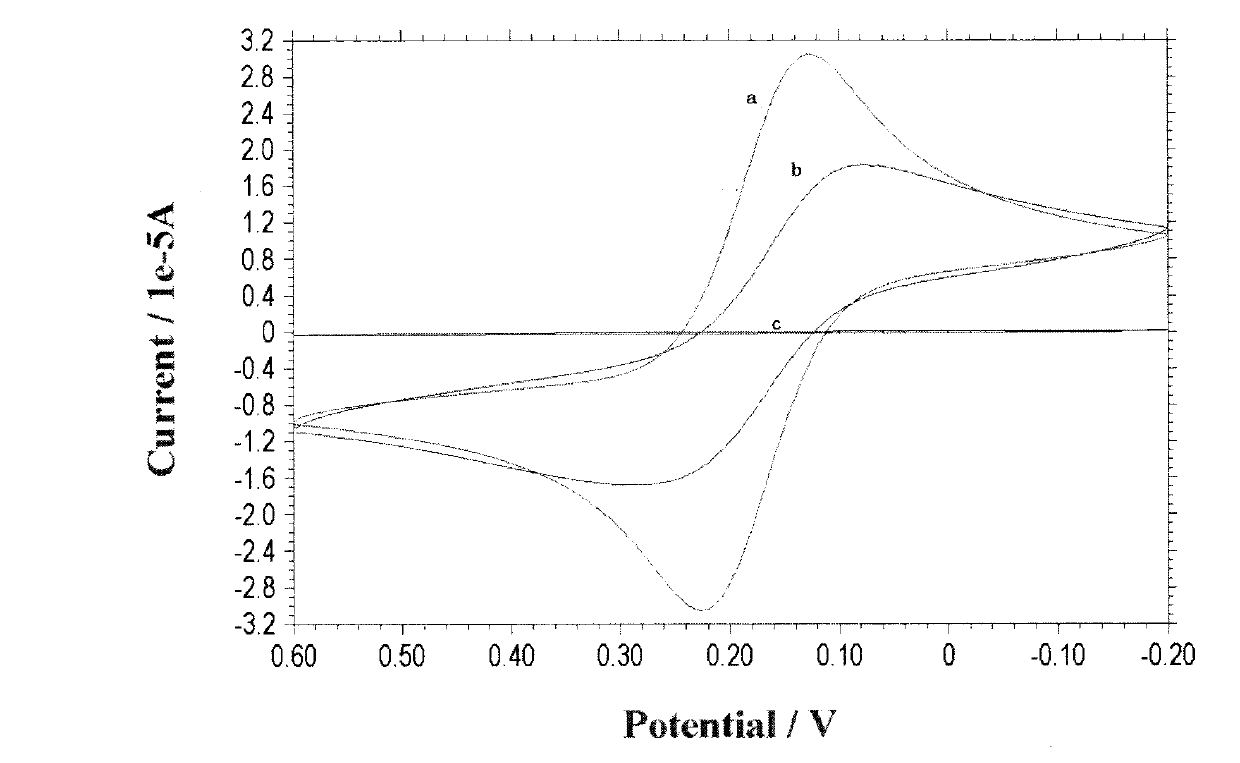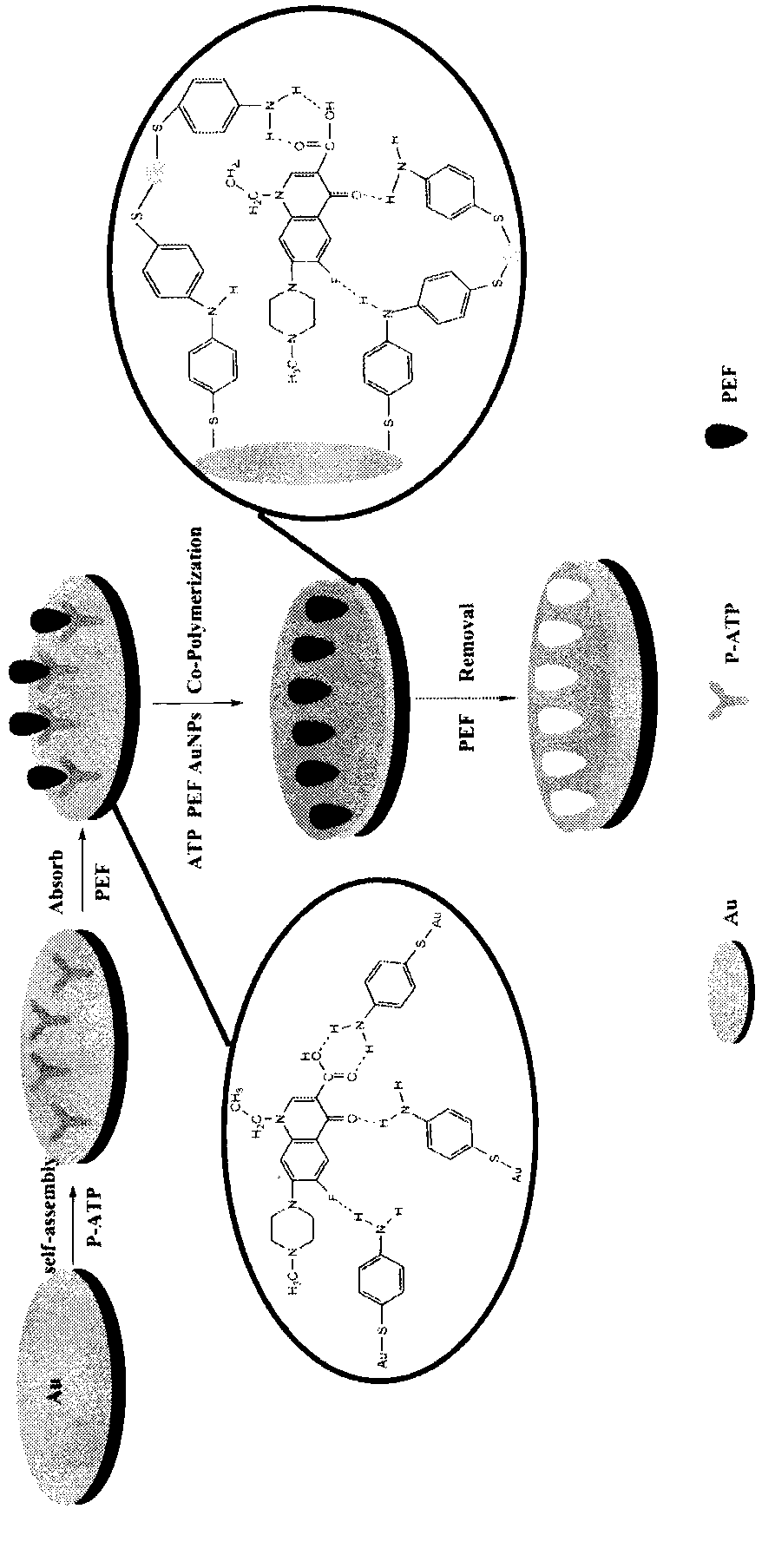Molecular imprinting sensor for detecting antibiotic pefloxacin and preparation method thereof
A technology of pefloxacin and molecular imprinting, applied in the direction of material electrochemical variables, etc., can solve the problems of limited application, loss of target substances, expensive instruments, etc., and achieve the effects of stable properties and structures, strong specificity, and low cost
- Summary
- Abstract
- Description
- Claims
- Application Information
AI Technical Summary
Problems solved by technology
Method used
Image
Examples
Embodiment 1
[0013] Implementation Example 1 Preparation of Pefloxacin Molecularly Imprinted Electrochemical Sensor
[0015] Take two gold electrodes with a diameter of 2 mm, soak them in Piranha solution for 15 min, and then use 0.3 μm and 0.05 μm Al 2 o 3 After the polishing powder is polished, it is ultrasonicated in absolute ethanol and ultrapure water for 5 minutes, and is scanned at -0.3-1.2V, 50mv / s until a stable cyclic voltammogram is obtained.
[0016] 2. Self-installation of electrodes
[0017] The polished electrode was placed in a 50 mmol / L ethanol solution of mercaptoaniline and incubated at room temperature for 24 h, and then washed with absolute ethanol and ultrapure water to remove mercaptoaniline not adsorbed by the gold electrode.
[0018] 3. Pefloxacin adsorption
[0019] The mercaptoaniline-modified gold electrode was placed in a pefloxacin solution containing 10 mmol / L, incubated at room temperature for 2 h, then washed with absolut...
Embodiment 2
[0023] Implementation Example 2 Application of Pefloxacin Molecularly Imprinted Electrochemical Sensor
[0024] 1. Drop the sample to be tested on the surface of the working electrode of the molecularly imprinted sensor, and incubate at room temperature for 15 minutes;
[0025] 2. Place the molecularly imprinted sensor in the electrolytic cell, and the detection bottom solution of the electrolytic cell is 2.5 mmol potassium ferricyanide buffer solution containing 0.1 mol / L KCl;
[0026] 3. Set appropriate scanning parameters and perform cyclic voltammetry (CV), alternating current impedance (EIS) and differential pulse (DPV) measurements.
[0027] The experimental results showed that the impedance value of the standard product pefloxacin increased with the increase of the concentration. Define the impedance value of the molecularly imprinted working electrode after washing off the template molecule pefloxacin R 0 , the electrode impedance value after the adsorption reaction ...
PUM
| Property | Measurement | Unit |
|---|---|---|
| diameter | aaaaa | aaaaa |
Abstract
Description
Claims
Application Information
 Login to View More
Login to View More - R&D
- Intellectual Property
- Life Sciences
- Materials
- Tech Scout
- Unparalleled Data Quality
- Higher Quality Content
- 60% Fewer Hallucinations
Browse by: Latest US Patents, China's latest patents, Technical Efficacy Thesaurus, Application Domain, Technology Topic, Popular Technical Reports.
© 2025 PatSnap. All rights reserved.Legal|Privacy policy|Modern Slavery Act Transparency Statement|Sitemap|About US| Contact US: help@patsnap.com


